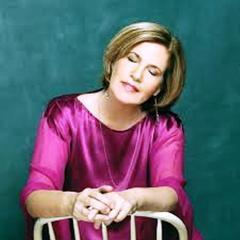|
Back
Energico ma con molto (East River) moto New York
Barge Music
07/13/2018 -
Ludwig von Beethoven: Piano Sonata No. 29 “Hammerklavier”, Opus 106
George Frederic Handel: Keyboard Suite No. 3 in D minor, HWV 428
Beth Levin (Pianist)

B. Levin (© PCMSconcerts.org)
“Handel is the greatest composer that ever lived. I would uncover my head and kneel before his tomb.”
Ludwig van Beethoven (1770-1827)
Beethoven’s famed quote above obviously didn’t refer to Handel’s keyboard suites. Nor the opera or pastorales. Obviously the young Beethoven was lauding (and imitating) Handel’s oratorios, those massive works which would impress the Bonn composer with their largesse, like Handel’s impressed Victorian audiences a century later.
That, though, was not consequential to Beth Levin, whose previous recitals at BargeMusic have been serious and impressive. While she has premiered several modern works here, she never fears the giants like the “Diabelli” Variations. And last night, her Hammerklavier was firmly in that class.
Before that, though, she performed her Handel Clavier Suite. I believe the program listing for “HWV 437” was wrong. This was third, the D Minor Suite, HWV 428. Beethoven possibly hadn’t heard any of the clavier suites, or if he had, he would have put these dance-pieces well below Bach.
Ms. Levin was not averse to playing it with a Bach/Beethoven fierceness and in her performance, the first Prelude could have been a Busoni/Bach arrangement of a Bach prelude. Most of those who choose keyboard over clavichord or harpsichord tend to take a middle path, but not Ms. Levin. The music here was “oratorio” music. The touch was hardly light, she was not averse to using the pedal and she was never afraid to employ the full power of the Grand Piano when necessary. Thus the following fugue was fast and furious.
The following two movements were graceful enough, but she showed true style in the variations of the Air. Starting very slowly, she developed a shape, an organic overall physicality to these variations before the scintillating finale Presto.
On a harpsichord, nuance would hardly be a option, but Ms. Levin energy was so strong that, except for the variations, she played it with full force,. Yet all the lines were clear, she rarely overdid the figuration. For while these suites can be gentle and songful, Ms Levin offered a late 19th Century visceral quality. One didn’t have to think of Baroque gentleness, and that gave the piece a unique strength.
Then again, the Barge of BargeMusic was not on its best behavior last night, frequently rocking from side to side. That didn’t seem to faze Ms. Levin in the least, nor was the music (for a bad pun) dis-concerted.
The opening of Beethoven’s B-Flat Sonata is invariably one of the iconic Maestoso openings. Ms. Levin was in her element here. Her left hand lifted those notes up an octave-and-a-half with ease, and she made that whole first movement sound like Beethoven the Hero, wrought in a myriad of sound.
Ironically, Beethoven’s specificity here (“For the pianoforte”) was the opposite of the preceding Handel (“Hey, anything that got a keyboard is hunky-dory with me”). And Beethoven made that newfangled instrument exactly as it could be played on a Steinway in 2018. (Even Weingartner’s precise orchestration sounds somewhat sapless.)
This is how Beth Levin handled it. She played the first two movements, even the Elysian slow movement, with a kinetic velocity, but clarity was her first concern. And when it came to than long Adagio sostenuto, she was not afraid to pause, to take rubatos when needed.
Rudolf Serkin, her teacher and mentor, might have given this Sonata a profundity, an undefinable depth that Ms. Levin was unable to reach. Yet she still had the breadth to give it real weight.
As for the final fugue, what one might call Beethoven’s “first” Grosse Fuge, I have never been able to keep up with the derangement of Beethoven’s inspiration. Yes, it is exhaustive for any pianist, and it equally exhaustive for any audience.
Like most pianists, no matter their expertise, Ms. Levin never cut through the endless Gordian knots of the composition. She did her best, her fingering was dextrous, no errors were made, yet at the end, we felt that we had been carried through the murk, swamp, mud and crags of a Chiang Rai cave. Once we heard the fresh air of the final chord, we were thankful for the adventure. And ever more thankful that Beth Levin led us safely from Beethoven’s creative madness into the pedestrian protective real world.
Harry Rolnick
|